Market Update: US Stocks Remain King of the Hill
Explore the latest market update on why US stocks continue to dominate the global financial landscape and what it means for investors
MARKET UPDATE
Matt CFA, CFP®
6/3/20248 min read

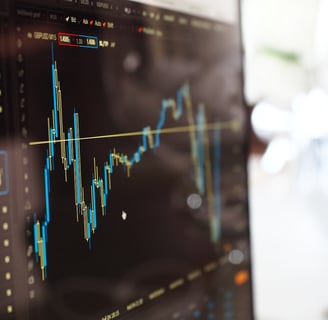
Tech Titans: The Driving Force Behind the US Stock Market Surge in 2024
We are off to the races again this year in the US stock market led by technology stocks once again (+17.3% YTD, S&P Global). Companies like Facebook (+32% YTD), Alphabet/Google (+24%), Microsoft (+11%), Amazon (+16%), and Nvidia (+121%) have delivered exceptional returns due to their dominance in areas such as artificial intelligence (AI), cloud computing, and digital services.
In fact, the tech sector is one of the key reasons why US stocks have materially outpaced International stocks over the past decade. While the official S&P classification results in a roughly 30% weight for the technology sector (~20% ten years ago) in the S&P 500 Index, adding tech-focused powerhouses such as Alphabet (GOOG/L), Amazon (AMZN), Meta (META), Netflix (NFLX), Tesla (TSLA), and others, pushes that weighting to around 40%, nearing levels not seen since the ‘dot-com’ era, LPL Research.
AI has revolutionized multiple industries, from healthcare to fashion to finance, driving demand for advanced computing solutions and will continue becoming mainstream. In many ways, the future is here…now. For example, Nvidia has benefited immensely from this trend (stock price +3,138% over the past 5 years as of 5/31; 3rd largest market cap in the world at ~$2.7 trillion, yahoo finance) as it manufactures the main chips used for generative AI. Its chips (known as GPUs) are essential for training AI models, leading to a surge in its stock price. Other companies, like Microsoft and Alphabet, have also capitalized on AI, integrating it into their products and services, which has boosted investor confidence and stock prices.
AI stocks are crucial to the overall stock market due to their role in driving innovation, market growth, and economic development. The technology sector’s dominance, the competitive advantages provided by AI, and the future potential of AI-driven advancements underscore the importance of these stocks to investors and the broader market. As AI continues to evolve, its influence on the stock market is expected to grow, making AI stocks an integral part of any forward-looking investment strategy.
Let’s touch on three topics surrounding AI: Economic Impact, Labor Markets, and Stock Market
Revolutionizing Industries: The Economic Impact of AI Across Sectors
The economic impact of AI extends beyond individual companies to entire industries and the global economy. AI-driven productivity gains, cost reductions, and new market opportunities contribute to economic growth, which in turn supports the stock market. In the short term, generative AI is expected to boost labor productivity, leading to lower inflation and reduced interest rates. Historically, increased productivity correlates with faster GDP growth and lower inflation. According to a report by PwC, AI could contribute up to $15.7 trillion to the global economy by 2030, underscoring its transformative potential and the resulting positive impact on stock markets. To put this number in context, the US economy is currently ~$25 trillion and the global economy is ~$107 trillion, IMF.
Source: Bank of America
The use cases for AI are endless and can provide noteworthy savings across multiple industries. Below are a few examples.
Transportation: The global autonomous vehicle market is expected to reach $1.6 trillion by 2030. AI-driven autonomous vehicles can reduce traffic accidents by up to 90% and save millions of lives, McKinsey.
Healthcare: AI applications in healthcare could save the U.S. healthcare industry up to $150 billion annually by 2026. These savings come from various AI-driven efficiencies, including improved diagnostics, personalized treatment plans, and streamlined administrative processes, Accenture.
Marketing: AI enables hyper-personalized marketing campaigns, improving engagement rates by up to 20%. Companies using AI for personalization have seen a 10-20% increase in sales, Boston Consulting Group.
As we continue to integrate AI into various facets of our economy, its potential to drive growth, efficiency, and innovation becomes increasingly apparent.
Future of Work: AI's Role in Shaping the Workforce of Tomorrow
By automating routine and repetitive tasks, businesses can free up human workers for more complex and creative tasks. For instance, AI can generate reports, write content, and design products, reducing the time and cost associated with these activities. According to a study by PwC, AI could boost labor productivity by up to 40% by 2035.
While there is concern about job displacement, AI is also expected to create millions of new job categories, particularly in tech development, data analysis, and AI system management. The World Economic Forum predicts that AI will create 97 million new jobs by 2025, even as it displaces 85 million.
Generative AI has the potential to create new economic activities and professions while simultaneously disrupting existing job structures, according to Morgan Stanley. The authors compare GenAI to two transformative technologies: the tractor and the spreadsheet. The tractor, introduced in the early 20th century, revolutionized agriculture by meaningfully increasing efficiency and reducing the need for manual labor. While this led to job losses in farming, it also freed up labor for emerging industries, paving the way for the modern economy. In contrast, the introduction of spreadsheets in the 1980s displaced clerical roles but created new jobs in finance and management. This technological advancement increased productivity and efficiency, highlighting how technology can shift labor demands rather than merely reducing jobs. The report suggests that GenAI resembles the spreadsheet more than the tractor, with the potential to create new job categories and augment existing roles.
Despite its potential, the adoption of GenAI faces several challenges. The report identifies "frictions" such as return on investment (ROI) concerns, data protection issues, skill deficits, and regulatory hurdles that could slow down widespread implementation. However, the potential market for AI applications is substantial. Currently, AI affects about 25% of occupations in the U.S., a figure that could rise to 44% within three years, representing $4.1 trillion in labor costs, Morgan Stanley.
As GenAI becomes more integrated into various sectors, the demand for specific skills over traditional credentials will increase. In fact, over half of the labor force will need significant training or reskilling to keep up with AI and automation advancements, World Economic Forum. Healthcare, professional services, and education are industries likely to see notable impacts, where worker activities can be augmented or automated, Morgan Stanley. This shift will necessitate a focus on developing core skills that align with the needs of an AI-driven economy.
Tech Overvaluation: Is the AI Surge Setting Up a Market Fall?
In recent years, the stock market has experienced a remarkable boost partially driven by advancements in artificial intelligence (AI). The market capitalization of a few tech giants has now become a significant portion of the overall market. This concentration means that any downturn in these stocks could have outsized effects on the broader market. The "Magnificent Seven" (Apple, Microsoft, Alphabet, Amazon, Nvidia, Meta Platforms, and Tesla) now account for over 25% of the S&P 500's total market cap, Bloomberg. However, this rapid growth has sparked concerns among investors and analysts about potential overvaluation and the risk of a market fall.
Timing market corrections is typically a fool’s game. The statistics and research overwhelmingly suggest that market timing is a difficult and often unproductive strategy. The data supports a long-term, buy-and-hold approach, which tends to yield better results by allowing investments to grow without the disruptions caused by trying to predict market movements. However, there are strategies that investors can deploy to mitigate the risks associated with market timing and to manage investments more effectively.
Dollar Cost Averaging involves regularly investing a fixed amount of money into an investment, regardless of market conditions, reducing the risk of poor investment decisions based on timing and smoothing out the purchase price over time.
Asset Allocation involves spreading investments across different asset classes like stocks, bonds, and real estate based on risk tolerance, investment goals, and time horizon, thus reducing risk through diversification and balancing risk and return.
Rebalancing entails periodically adjusting your portfolio to maintain your desired asset allocation, helping to keep your portfolio aligned with your risk tolerance and encouraging a disciplined approach to buying low and selling high.
We have covered many of the positive attributes that the stock market is pricing in for AI stocks which is euphoric in many ways. Based on economic projections and widespread adoption across multiple industries, the excitement and positive stock market impact may be warranted. However, we must remember that the stock market is a basket of individual stocks whose price is determined by individuals (retail and institutions) that value companies based on expected future earnings discounted to today. Since expectations for AI stocks are currently through the roof, even if and when AI continues to transform the world it doesn’t mean that these stocks (and the overall market) will keep going higher. In fact, several indicators suggest that the current valuations might be overly optimistic.
As of mid-2024, the technology sector's valuation is markedly higher than the broader market. The forward price-to-earnings (P/E) ratio for the S&P 500 technology sector is around 25x, compared to the overall market's forward P/E ratio of ~20x. This indicates that investors are willing to pay a premium for tech stocks, reflecting their growth potential and the transformative impact of technologies like AI and cloud computing, Morgan Stanley.
Historically, the P/E ratios for tech stocks have fluctuated quite a lot. During the dot-com bubble in the late 1990s, tech stock valuations soared to unsustainable levels before crashing in the early 2000s. Today’s valuations, while high, are supported by substantial revenues and profits from leading tech companies, which distinguishes the current market from past bubbles. However, the tech sector's current P/E ratios relative to the overall market are still higher than their historical averages, suggesting potential overvaluation, Advisor Perspectives.
Experts like those from BlackRock and Morgan Stanley caution that the exuberant rally in tech stocks has left little room for error. Analysts emphasize that while AI and other technological advancements provide robust growth opportunities, high valuations mean that any disappointment in earnings or economic conditions could lead to a market correction. Investors should remain cautious and consider the possibility of market corrections if future earnings do not meet high expectations.
While the AI surge has undeniably driven impressive gains in the stock market, it is essential to approach the current market conditions with cautious optimism. Investors should be mindful of the potential for overvaluation and the risks associated with speculative investments. Diversification and a focus on fundamentals remain key strategies for navigating this dynamic and rapidly evolving landscape.
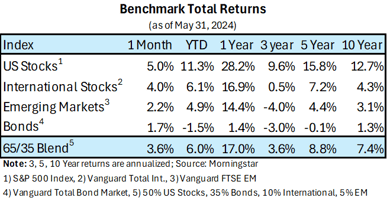

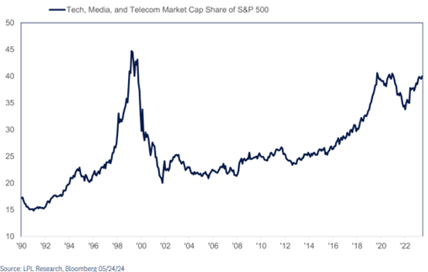



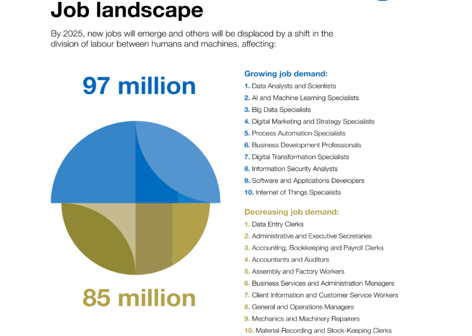

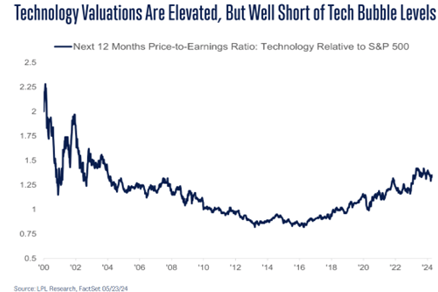

3857 Pell PL Unit 103 San Diego, CA 92130
mk@hevelcapital.com
(636) 236-9039
All content is for information purposes only. It is not intended to provide any tax or legal advice or provide the basis for any financial decisions. Nor is it intended to be a projection of current or future performance or indication or future results.
Opinions expressed herein are solely those of Hevel Capital, LLC and our editorial staff. The information contained in this material has been derived from sources believed to be reliable but is not guaranteed as to accuracy and completeness and does not purport to be a complete analysis of the materials discussed. All information and ideas should be discussed in detail with your individual adviser prior to implementation. Advisory services are offered by Hevel Capital, LLC an Investment Advisor in the State of California. Being registered as an investment adviser does not imply a certain level of skill or training.
The information contained herein should in no way be construed or interpreted as a solicitation to sell or offer to sell advisory services to any residents of any State other than the State of California or where otherwise legally permitted.
Images and photographs are included for the sole purpose of visually enhancing the website. None of them are photographs of current or former Clients. They should not be construed as an endorsement or testimonial from any of the persons in the photograph.
Purchases are subject to suitability. This requires a review of an investor’s objective, risk tolerance, and time horizons. Investing always involves risk and possible loss of capital.
